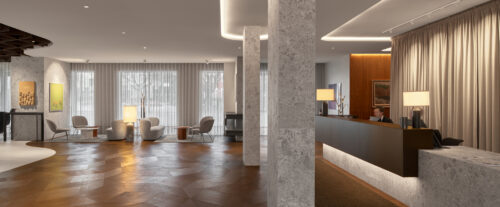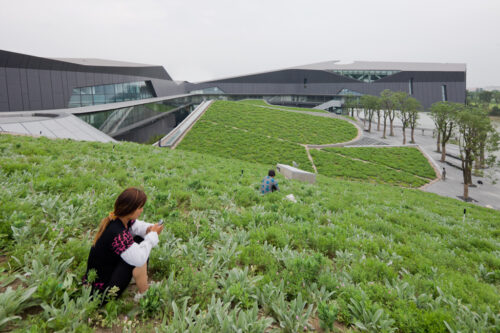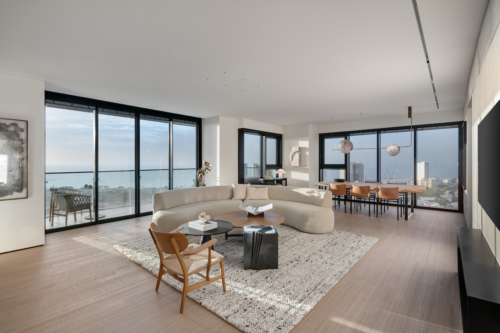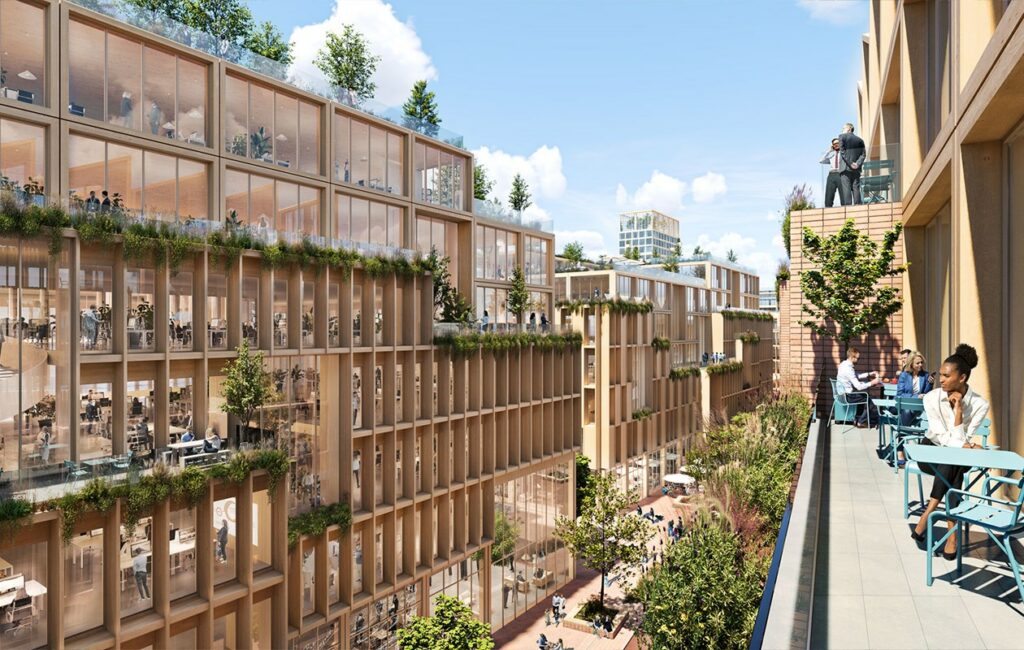
This forest city has taken root in the disused industrial district of Sickla, south of the Swedish capital. The masterplan for the Stockholm wood city project – a four-handed effort by Henning Larsen and White Arkitekter – covers an area of 250 thousand square metres, destined to house an impressive seven thousand offices and two thousand homes.
Utopia? No reality, after the Sara Kulturhus Centre, Sweden’s tallest wooden skyscraper (and on the world podium), the futuristic Wood City is set to become the largest wooden settlement on the planet. The titanic composition of buildings testifies to the absolute hegemony of Swedish expertise and innovation in the field of sustainable architecture. Construction is scheduled to begin in 2025 and the first buildings will be delivered by 2027.
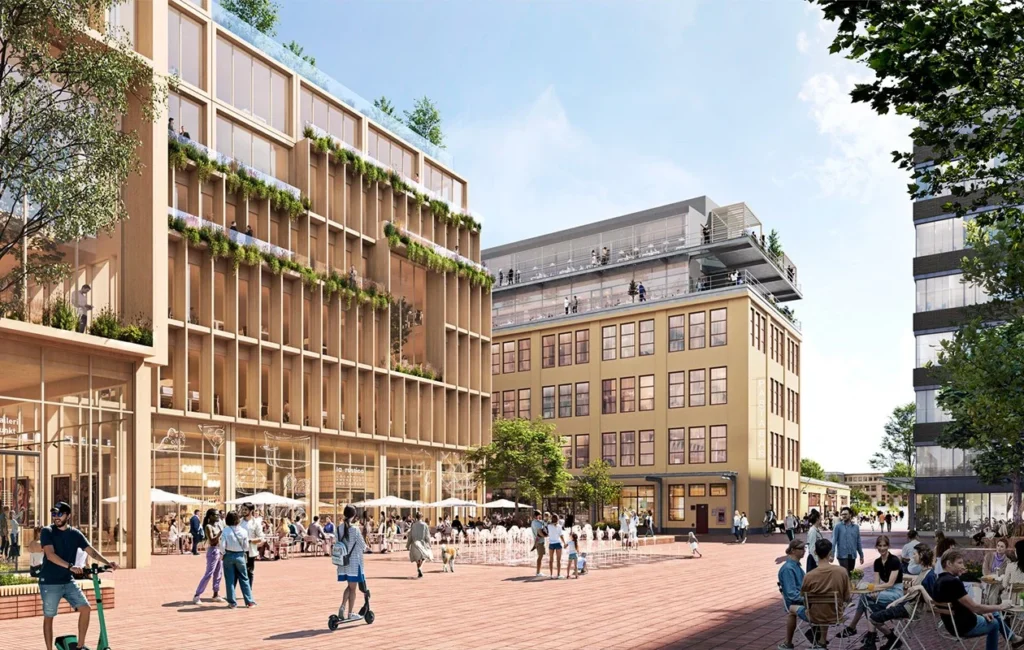
Atrium Ljungberg has thrown down the gauntlet: to build the world’s largest laminated timber quarter (with 30 timber buildings spread over 25 blocks), thus reducing the significant environmental footprint of ‘traditional’ building materials. In addition, timber construction requires less construction time and makes the work quieter; just as the renewable material par excellence is proven to have positive effects on people’s psychophysical state, reducing stress and improving concentration.
The quantum leap made by the two major design studios Henning Larsen and White Arkitekter, marks the epochal shift from cement to wood: the heart of the hard-fought debate on sustainable and, at the same time, high-tech housing and buildings. According to the proponents, these wooden structures are healthy carriers of both environmental benefits and health and well-being for people, ensuring better air quality – thanks to their ability to store carbon dioxide – and reducing stress and thus increasing productivity in the workplace.
READ ALSO – Spa architecture, salus per aquam chooses wood to enhance well-being
The modern wooden structures will be incorporated in an urban space designed to improve the quality of life in harmony with the landscape, an oasis of relaxation and well-being enriched with commercial activities, parks, restaurants and other services. And while the record for the world’s tallest wooden building is disputed between Wisconsin and Switzerland, Stockholm wood city is unrivalled in this field (at least for the foreseeable future).
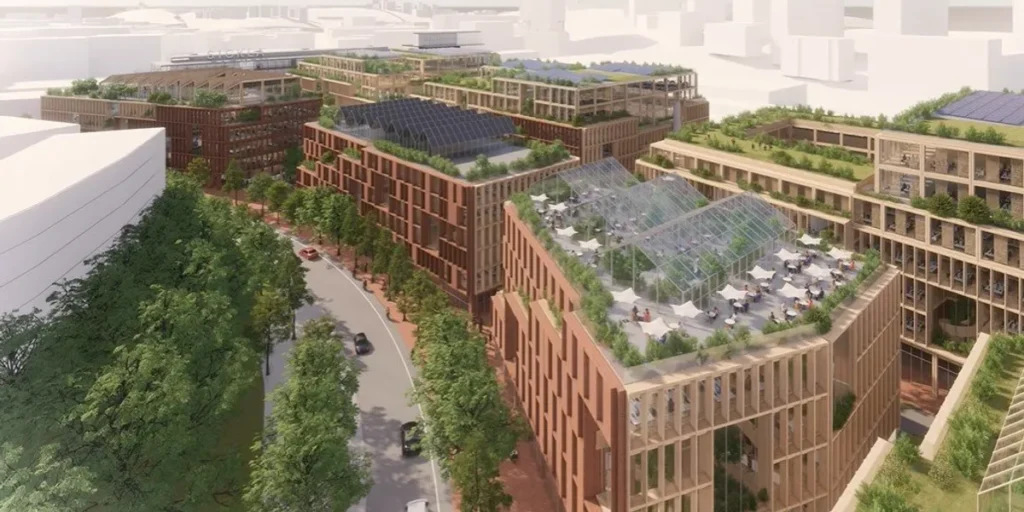
The use of wood in architecture: the material of the future is already present.
We know for a fact that the history of wood as the main material of sustainable building has ancient roots, we also remember that, originally, the old houses in Scandinavian countries were made of wood pulp. This is exemplified by the colourful houses, built over the centuries, with long square beams and painted in the characteristic colours kissed by the northern light, which reverberates in the brightest shades of yellow, red and even black and purple.
We can confidently state that this long and skilful architectural tradition is by no means extinct, on the contrary, it is alive and well and is enjoying a new season of rebirth beyond the borders of Scandinavia. Wood is the navel of the future of construction and an authentically sustainable lifestyle. Stockholm wood city is therefore consistent with Swedish history and represents one of the highest peaks of its natural evolution.
For example, in Bergen, Norway, a 50 metre high wooden skyscraper has been built, housing 62 flats; in Vancouver there is a 53 metre high wooden dormitory, which was completed in 9 and a half weeks; in Sweden, in Skelleftea, the famous Sara KulturHus is a wooden skyscraper of about 76 metres; just outside Oslo, back in Norway, the Mjøstårnet skyscraper reaches 85 metres, and is made entirely of glulam, including the supporting structure. The innovation of the ambitious Swedish project, on the other hand, is that of designing a priori (recalling all that universal and necessary knowledge extracted from our intellectual faculties) an imposing settlement of wooden buildings, to shape a complete city corresponding to the strictest principles of sustainable building.
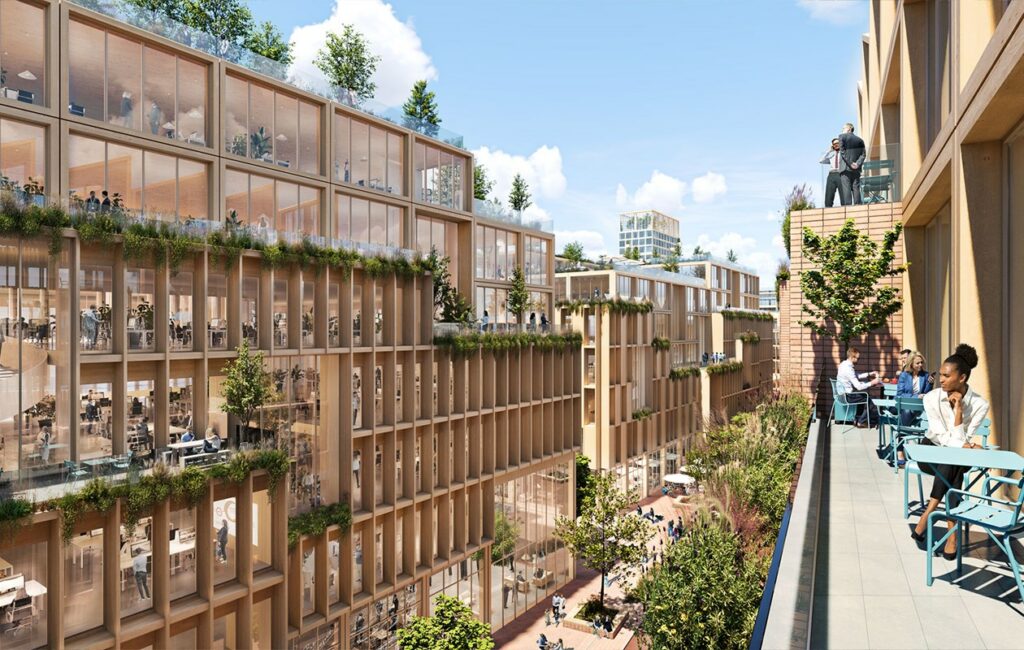
“The decision to initiate this project,” explain the architects, “is to respond to the need of more and more people to live in innovative and sustainable housing. The dwellings designed by the studio will guarantee concrete benefits for both the environment and the well-being and health of its inhabitants.
With Stockholm wood city, the ‘Venice of the North’ confirms itself as the guiding star to look to for urban sustainability: the Swedish capital was the first in 2010 to be awarded the prestigious European Green Capital.
“Stockholm wood city represents our future. There is an increasing demand from people for innovative and sustainable solutions for housing and construction in general, a demand that we want to satisfy with this initiative,’ emphasised the managing director of Atrium Ljungberg, which is in charge of realising the project. ‘This is a historic milestone for Sweden.
READ ALSO – THG Arkitektar designs Iceland Parliament Hotel, the new destination in the land of ice and fire
The settlement will be characterised by a strong push towards self-sufficiency and energy efficiency, thanks to the use of photovoltaic panels to self-produce energy and cleverly insulated structures that provide greater temperature control and thus reduce and mitigate the use of air conditioners or other equipment to heat or cool the buildings. The designers have also integrated some elements borrowed directly from nature, such as green roofs (which improve thermal insulation) and large windows to allow precious natural light to penetrate inside, in the horizon of a harmonious and wellness-generating scenario.
The project also acts in the direction of rebalancing the city’s flows: “Stockholm is unbalanced, as about half of the citizens live south of the centre, but most of the work spaces are in the north,” said Annica Ånäs of Atrium Ljungberg. For this reason, the new district can help reduce the number of commuters and increase the possibilities for zero kilometre work.
As part of the visionary project, which does not have to be moulded to the diktats or timetables dictated by our country’ National Recovery and Resilience Plan, is also the new metro line, which will connect the neighbourhood to the centre, although it will not be necessary to commute to have all services at hand. The project, in fact, takes up the concept of the ’15-minute city’, where getting everywhere is made possible by a short walk or bicycle ride. The timetable, which we can bet will be faithfully complied with by the Swedes, will start work in two years with the first building completed and delivered by 2027.

